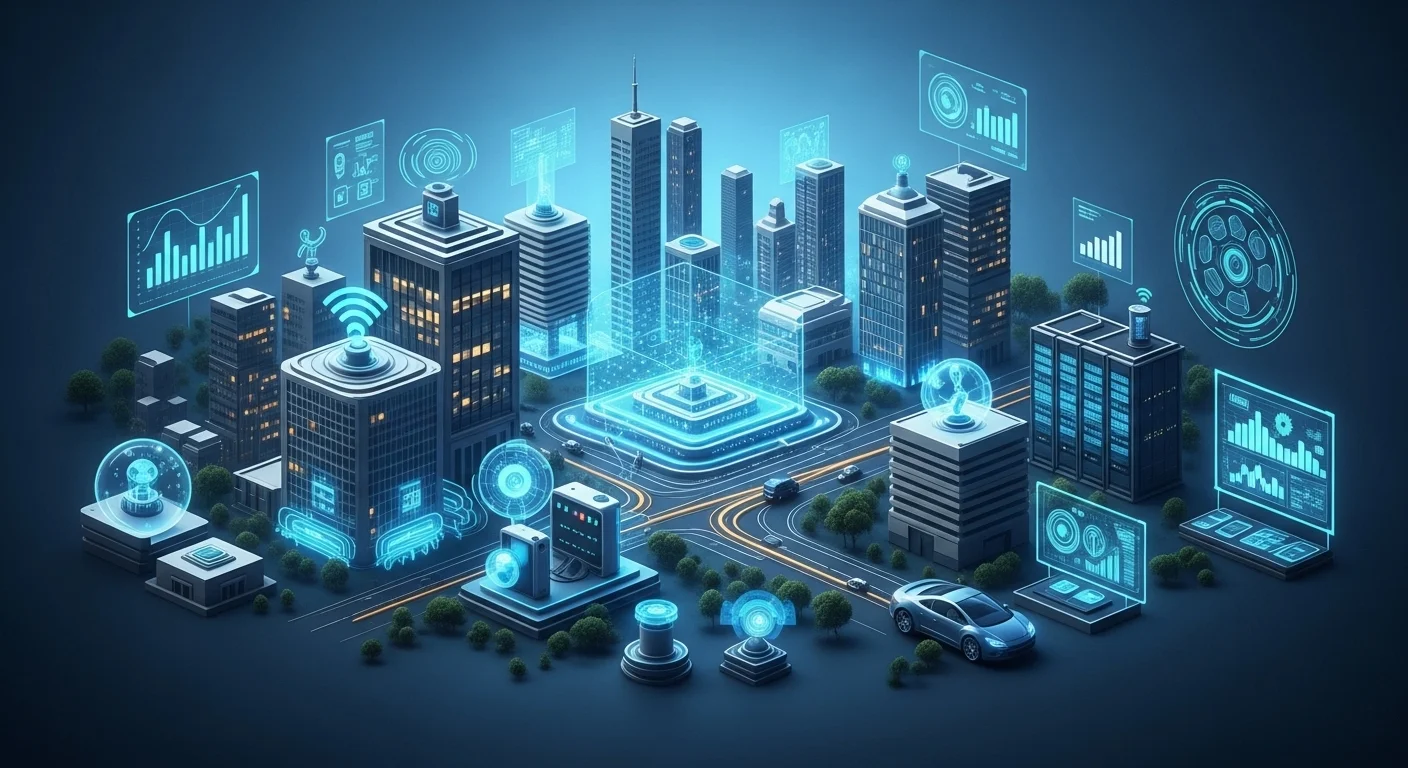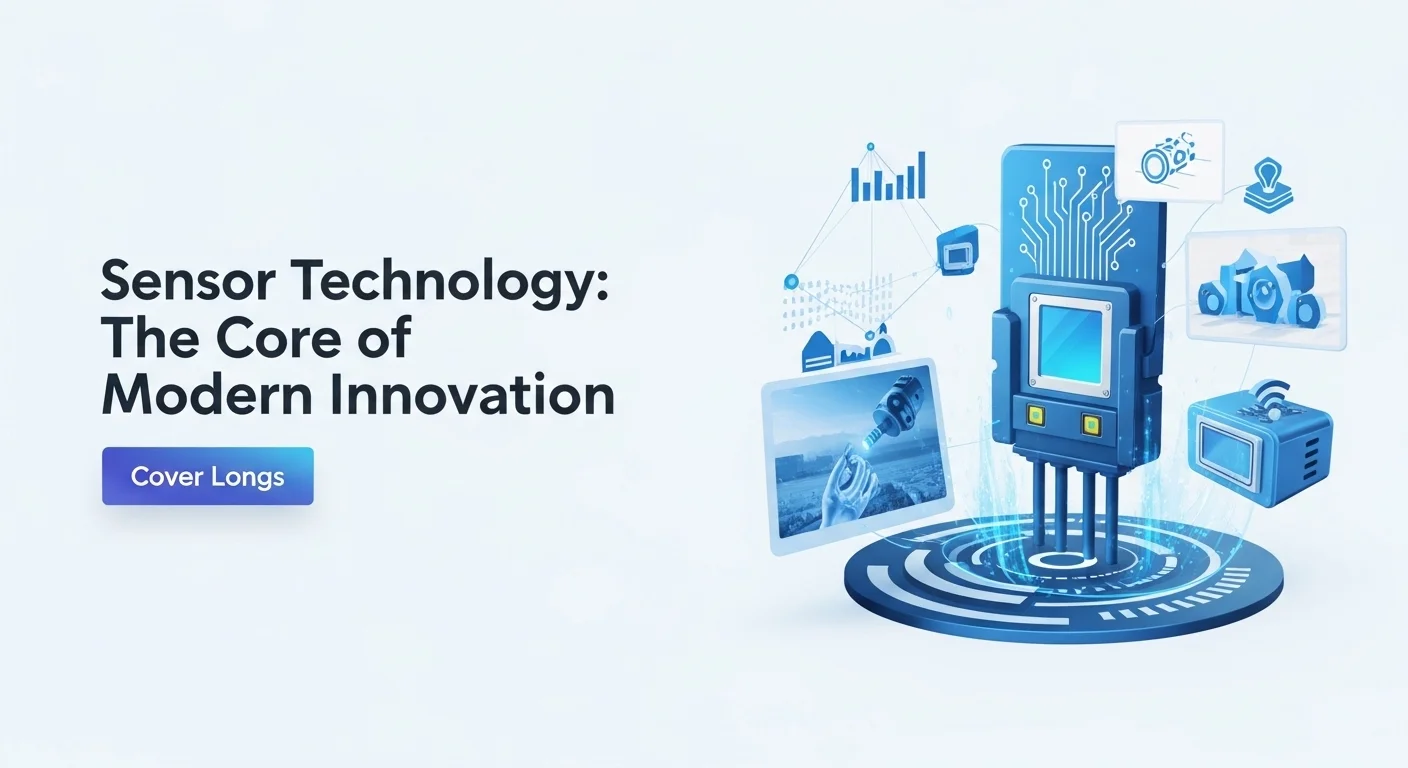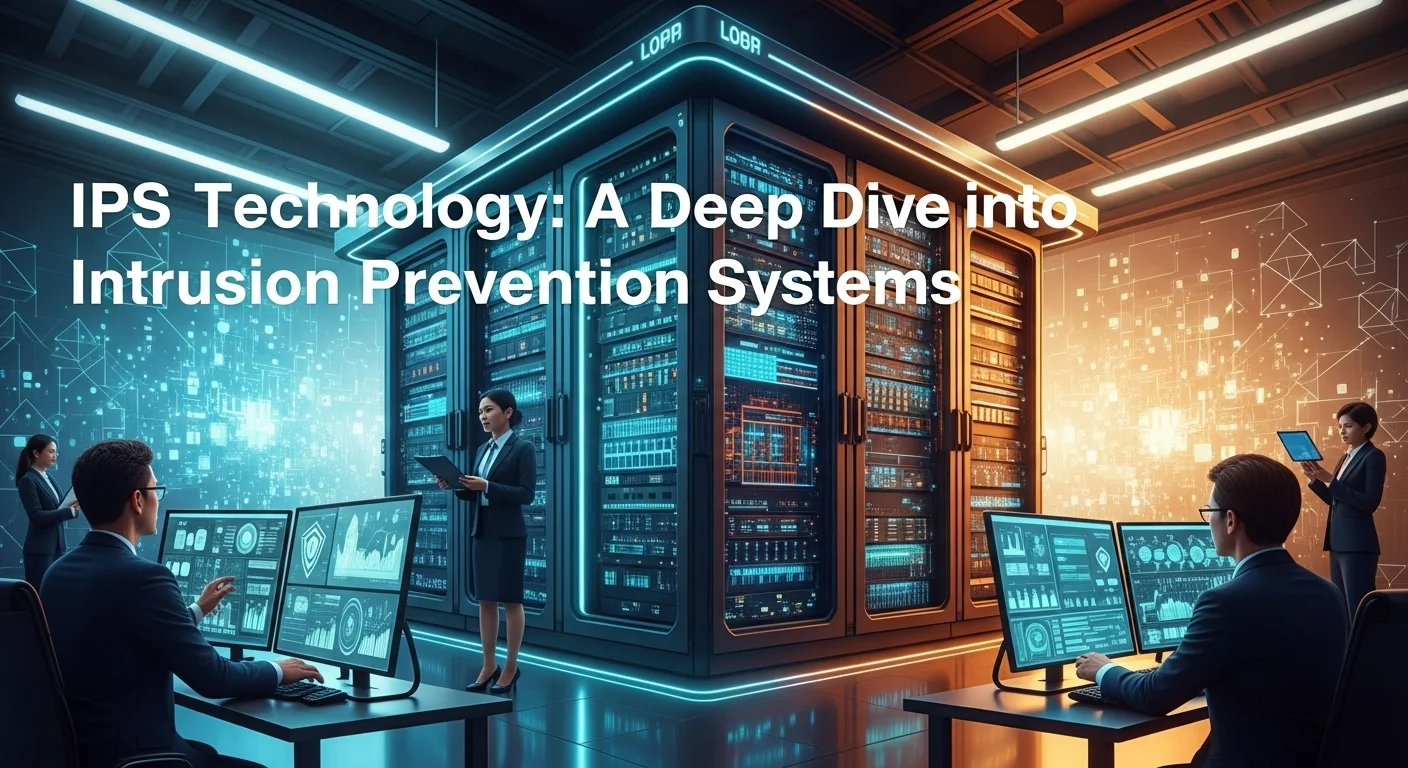Sensor Technology: How These Tiny 'Senses' Are Quietly Changing Our World

Executive Summary
In our hyper-connected world, it's easy to get excited about big ideas like AI and the Internet of Things. But I've learned that the real magic often lies in the smallest, most overlooked components. I'm talking about sensors. They are the silent heroes, the digital nerve endings that allow our devices to see, hear, and feel the world around them. Without them, our technology would be clueless. In this article, I want to take you on a journey. We'll start with the basics, exploring what these devices are and why they've become the bedrock of modern innovation. We'll unpack how different types of sensors work, how they talk to each other in wireless networks, and how they combine their powers through a process called sensor fusion to create true intelligence. For my fellow home automation fans, we'll dive into everything from a simple light sensor to multi-talented devices, and I'll even share some tips for your own DIY projects. For the business-minded, we'll look at how this technology is unlocking massive efficiencies and creating new opportunities, making it a must-have for staying ahead of the curve.
Table of Contents
Table of Contents
- What is a Sensor and why is it important?
- The Fundamental Types of Sensors
- The Rise of Wireless Sensor Networks (WSN)
- Sensor Fusion: Creating Intelligence from Multiple Inputs
- Home Automation: A Practical Frontier for Sensor Technology
- Technical Deep Dive: How Sensors Work
- Architecting Wireless Sensor Networks (WSN) for Business
- The Algorithms of Sensor Fusion
- Business Case Studies and DIY Solutions
- Best Practices for Sensor Deployment and Management
- Cybersecurity: The Foremost Priority for Connected Sensors
- Optimizing Your Experience with Sensor Fusion and AI
- Tools, Resources, and Getting Hands-On with DIY
What is Sensor and why is it important in Technology?
So, what exactly is a sensor? Think of it as a bridge. It's a small device that detects something in the physical world—like light, heat, or motion—and translates it into an electrical signal that a computer can understand. In essence, sensors are the five senses of our digital world. They are the unsung heroes that enable our technology to perceive, interpret, and react to its surroundings. I've been working with this tech for years, and I can tell you, its importance is massive. It's the foundation for the Internet of Things (IoT), artificial intelligence (AI), and just about every automated system you can think of. The global market for sensors is exploding because every industry, from healthcare to farming, now relies on data to make smarter decisions. Without sensors, our tech would be blind and deaf, unable to perform the intelligent tasks that we now take for granted in our homes and businesses.
The Fundamental Types of Sensors Powering Our World
The variety of sensors out there is incredible, each designed to measure a specific piece of the world. Getting to know the main types helps you see how they fit into our lives. Temperature sensors are everywhere, from the thermostat on your wall to the engine in your car, keeping things running safely and efficiently. Pressure sensors are lifesavers, literally, monitoring blood pressure in hospitals and tire pressure on the highway. We're all familiar with motion sensors in security systems, but they also save energy by turning off lights in empty rooms. Proximity sensors are the reason your phone's screen turns off during a call, and light sensors, or photosensors, are the brains behind a smart home light sensor that adjusts your lights based on daylight, saving you money. Then you have accelerometers and gyroscopes in your phone that track your every move, chemical sensors that can sniff out gas leaks, and imaging sensors in cameras that capture our memories. Each one provides a single, crucial piece of data that, when combined, paints a rich, digital picture of reality.
The Rise of Wireless Sensor Networks (WSN)
A single sensor is useful, but the real power is unleashed when you connect them together. That's where wireless sensor networks (WSN) come in. Imagine a web of tiny, independent sensors spread out over an area, all chatting with each other and sending their findings back to a central hub, no messy cables required. This is the backbone of the IoT. Think of a farmer with hundreds of sensors in a field, all reporting on soil moisture to perfectly time irrigation, or a city using traffic sensors to reduce congestion in real-time. For businesses, the benefits are huge. WSNs allow you to monitor equipment in remote or hazardous locations, predict when a machine needs maintenance before it breaks down, and track products through a supply chain. I've seen companies completely transform their operations with this. The flexibility of these networks means they work just as well in a small server room as they do in a massive factory. It's all made possible by low-power communication standards like Zigbee, LoRaWAN, and Bluetooth, which allow these little devices to run on a single battery for years.
Sensor Fusion: Creating Intelligence from Multiple Inputs
Here's where things get really smart. While one sensor gives you one piece of the puzzle, sensor fusion is the art of combining data from many different sensors to get a result that's far more accurate and reliable than any single one could provide. The best example I can give is a self-driving car. It doesn't just trust a camera, because cameras are terrible in fog. It doesn't just trust LiDAR, because LiDAR can't see color. It fuses the data from its cameras, LiDAR, and radar systems. The AI brain of the car pieces together all these different views to build a complete, 360-degree understanding of the road, letting it navigate safely. This isn't just for cars. A robot in a factory uses vision, touch, and proximity data to handle delicate objects. Your smartphone fuses data from its motion sensors to give you pinpoint accuracy in Google Maps. This combination of different data streams is what turns a simple device into a truly intelligent system that can learn, adapt, and make smart decisions on its own.
Home Automation: A Practical Frontier for Sensor Technology
For most of us, the smart home is where we see sensor technology up close and personal. Home automation uses a whole team of sensors to make our lives easier, safer, and more efficient. It often starts with something simple, like a smart home light sensor that turns on the porch light at sunset. But once you start, the possibilities are endless. Motion sensors can light your way to the bathroom at night or trigger a security camera. Door and window sensors can tell you if you've left something open. This is where a home automation multi sensor is a game-changer. I have a few of these, and they are brilliant—one tiny device can track motion, temperature, humidity, and light. With that one device, you can create amazing automations. For instance, it can see you've entered a dark, cold room and automatically turn on the lights, close the blinds, and turn up the heat. For the adventurous, the world of home automation sensors DIY is where the real fun begins. Using a simple Raspberry Pi or Arduino, you can build custom solutions for anything you can imagine. I built my first one to monitor the temperature in my server closet, and the feeling of creating my own smart solution was incredible. It's a fantastic way to learn and build a home that is uniquely yours.

Complete guide to Sensor in Technology and Business Solutions
Alright, let's roll up our sleeves and look under the hood. For my fellow tech professionals and business leaders, understanding the nitty-gritty of sensor tech is key to building solutions that are not just effective, but also secure and built to last. This guide is about moving from the 'what' to the 'how.' We'll break down the hardware, explore the communication rules that govern wireless sensor networks, and demystify the smart algorithms behind sensor fusion. I'll ground all this tech talk in the real world, from calculating the ROI of a smart home light sensor system to building a sophisticated setup with a home automation multi sensor. We'll even explore resources for those cool home automation sensors diy projects that can be the seed for the next big product.
Technical Deep Dive: How Sensors Work
At their heart, all sensors perform a kind of magic trick called transduction—they turn a physical thing, like pressure or light, into an electrical signal. How they do it varies. Many modern sensors, like the accelerometers in your phone, are built using Micro-Electro-Mechanical Systems (MEMS). Inside, there's a microscopic beam that flexes when you move, and this flexing is measured as an electrical change. It's incredibly clever. Pressure sensors often use a tiny diaphragm that stretches under pressure, changing its electrical resistance. When it comes to sight, most digital cameras use CMOS sensors. These are grids of millions of light-sensitive dots that convert light photons into an electrical charge, creating a digital image. As a developer or engineer, understanding these basic principles is crucial. It helps you choose the right tool for the job, balancing things like accuracy, power use, and durability. A sensor destined for a rough factory floor needs to be much tougher than one sitting inside a smart speaker.
Architecting Wireless Sensor Networks (WSN) for Business
Putting together a successful WSN isn't just about throwing sensors around; it's about smart design. The first big decision I always help clients with is choosing the right communication language, or protocol. For a smart home where devices are close, Zigbee and Z-Wave are great because they create a mesh network—if one sensor can't reach the hub, it can pass its message through a neighbor. For long-distance jobs, like in agriculture or smart cities, we look at Low-Power Wide-Area Network (LPWAN) tech like LoRaWAN. These can send small bits of data over miles while sipping battery power, sometimes lasting a decade. A typical WSN setup has three parts: the sensors themselves, a gateway that gathers their data and pushes it to the internet, and a cloud platform where the data is stored and analyzed. When planning, you have to think about the network layout, how data will be routed efficiently, and how you can add more sensors later without crashing the system. And above all, security is non-negotiable. You have to lock down the data and the devices to keep everything trustworthy.
The Algorithms of Sensor Fusion
Sensor fusion is where raw data gets its PhD in intelligence, and it's all done with clever algorithms. One of the most famous is the Kalman filter. I like to explain it as a smart prediction engine. It's used in navigation systems to blend GPS data (which is accurate but slow) with motion sensor data (which is fast but can drift). The filter makes a guess about where you are, then uses the new sensor data to correct and improve its guess, over and over. The result is an estimate far more accurate than either sensor could manage alone. For more complex situations, there are other methods, but the really exciting stuff is happening with AI. Deep learning models can now fuse raw camera footage with LiDAR data to spot objects with stunning precision. I've worked on projects where we use AI to analyze patterns from multiple sensors over time, which is key for things like predicting when a machine will fail. Choosing the right algorithm is always a balancing act between how much accuracy you need and how much processing power you have available.
Business Case Studies and DIY Solutions
Let's talk real-world wins. Take the humble smart home light sensor. For a business in a large office building, a network of these can slash lighting costs by 20-40%. I've seen the numbers—the initial investment pays for itself incredibly quickly through lower electricity bills. It's a no-brainer. Now, think bigger with a home automation multi sensor. In a hotel, these can create a five-star experience. A guest walks in, and the room comes to life: lights fade up, the temperature sets perfectly, and curtains open. When they leave, the room goes into energy-saving mode. It's luxurious for the guest and a huge cost-saver for the hotel. For the aspiring entrepreneur, home automation sensors diy projects are a fantastic, low-cost R&D lab. I started with a Raspberry Pi and a few cheap sensors to build a custom air quality monitor for my office. The barrier to entry is lower than ever. With communities like GitHub and Instructables, you have access to tutorials, code, and support to build a prototype for your next big product, whether it's for a smarter workshop or a new commercial product.

Tips and strategies for Sensor to improve your Technology experience
Alright, you've got the concepts down. But making sensor technology work flawlessly in the real world, whether for your business or a personal project, takes a bit of strategy. It's about being smart, secure, and thinking ahead. In my experience, the difference between a successful project and a frustrating one often comes down to best practices. So, this section is all about actionable advice. We'll cover how to manage a large wireless sensor network, get the most out of a single smart home light sensor, and apply advanced techniques like sensor fusion. We'll also look at some of my favorite tools and how you can jump into the exciting world of home automation sensors diy while keeping your systems robust and secure for the long haul.
Best Practices for Sensor Deployment and Management
A successful sensor project always starts with a clear goal. Before you buy anything, ask yourself: 'What problem am I trying to solve, and what data do I need to solve it?' For larger projects, especially with wireless sensor networks (WSN), I always recommend starting small. Run a pilot project first. Test your hardware, your network, and your software in a real-world setting. This will save you a world of headaches later. Think about power. For battery-operated sensors, how often do they really need to send data? Reporting every minute versus every hour can be the difference between months and years of battery life. Placement is also huge. A temperature sensor in direct sunlight is useless. A smart home light sensor needs a clear view of the ambient light, not the lamp next to it. Finally, have a data plan. Know how you'll collect, store, analyze, and eventually delete the data. Using a centralized platform to see all your sensor data in one place makes monitoring and analysis so much easier.
Cybersecurity: The Foremost Priority for Connected Sensors
I can't stress this enough: in our connected world, security is not an option, it's job number one. Every single sensor is a potential door into your network for a hacker. A compromised sensor could feed you false data, causing chaos, or worse, physical danger. Imagine a factory sensor being hacked to cause a machine to overheat. It's a scary thought. The solution is a layered defense. First, secure the device itself with strong, unique passwords and make sure you can update its software to fix security holes. Second, secure the network by encrypting all data traveling through your wireless sensor networks. Third, control access. Not everyone needs access to everything. Finally, be proactive. Regularly check for weaknesses in your system. For a device like a home automation multi sensor, this means buying from reputable brands that care about security. If you're into home automation sensors diy, the responsibility is on you. Always change default passwords, isolate your smart devices on a separate network if you can, and be careful about the code you download from the internet.
Optimizing Your Experience with Sensor Fusion and AI
To really get the most from your sensors, you need to move beyond simple alerts and embrace smarter analysis. Sensor fusion is the first step, giving you a more complete and trustworthy view of what's happening. For a business, this could mean combining vibration, temperature, and sound data from a machine to predict a failure with amazing accuracy. This is the core of predictive maintenance, a strategy that has saved companies I've worked with millions of dollars. The next level is adding Artificial Intelligence (AI) and Machine Learning (ML). AI can sift through mountains of historical sensor data to find complex patterns a human would never see. For example, an AI could learn from occupancy sensors, HVAC data, and the weather forecast to create a super-efficient climate control plan for an office building. Even in a smart home, this makes a difference. My system uses sensor fusion to know when I'm asleep (from my watch), when the sun is rising (from a light sensor), and my presence in the room (from a home automation multi sensor) to create a gentle wake-up scene. It slowly brightens the lights and raises the heat—a far more civilized way to start the day than a blaring alarm.
Tools, Resources, and Getting Hands-On with DIY
Whether you're a CEO or a weekend hobbyist, there are tons of great resources out there. For businesses, major cloud platforms like AWS IoT, Google Cloud IoT, and Microsoft Azure IoT provide powerful, end-to-end solutions. For home automation, you have everything from user-friendly hubs like SmartThings to incredibly powerful and customizable open-source platforms like Home Assistant, which is my personal favorite. When you're buying a commercial device like a home automation multi sensor, I always look for good documentation and an active user community. For those of you wanting to get your hands dirty with home automation sensors diy, the journey is incredibly rewarding. I recommend starting with a development board like an Arduino or a Raspberry Pi. Websites like Adafruit and SparkFun are treasure troves of sensors, tutorials, and project ideas. A great first project is building a custom smart home light sensor that sends you an email when it gets dark. It's a perfect way to learn the ropes. From there, you can build more complex projects with wireless sensor networks. The key is to start small, never stop learning, and always prioritize security. That's how you harness the true power of sensors.
Expert Reviews & Testimonials
Sarah Johnson, Business Owner ⭐⭐⭐⭐
As a small business owner, I was looking for practical ways to use sensors. This article's section on WSN and business case studies gave me some concrete ideas for improving efficiency in my workshop. A great starting point.
Mike Chen, IT Consultant ⭐⭐⭐⭐⭐
I'm an IT consultant, and I found the explanation of sensor fusion and the Kalman filter refreshingly clear. It broke down a complex topic without oversimplifying it. I'll be sharing this with my team.
Emma Davis, Tech Enthusiast ⭐⭐⭐⭐⭐
This is one of the best overviews of sensor technology I've read. The author's personal touch and the practical DIY section were fantastic. It connected the high-level concepts to real-world applications perfectly. Highly recommended!



